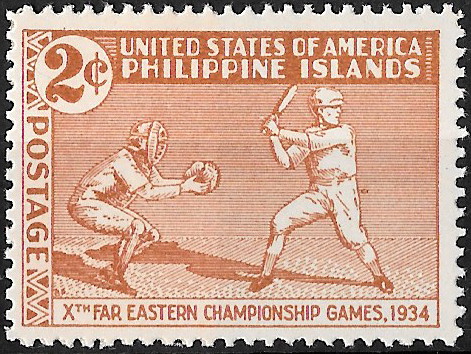
1934 10th Far Eastern Championship Games
The Far Eastern Championship Games were conceptualized, proposed and created in 1913 by the then head of the Philippine Amateur Athletic Association, Elwood Brown. In 1913 the games were named the the First Oriental Olympic Games. It was from 1915 that the name Far Eastern Championship Games would be used. The Far Eastern Championship Games were initially be held every 2 years as a multi-sport event contested by China, Japan and the Philippines. The Philippines actually hosted both the first and last games in 1913 and 1934 respectively. On occasion other nations were allowed to also participate.
| Game # | Year & Date Held | Host Nation, CIty | Participants |
|---|---|---|---|
| 1 | 1913, 3-7 Feb | Philippines, Manila | China, Philippines, Japan, Federated Malay States, British Hong Kong, Kingdom of Siam |
| 2 | 1915, 15-21 May | China, Shanghai | China, Philippines, Japan |
| 3 | 1917, 9-12 May | Japan, Tokyo | China, Philippines, Japan |
| 4 | 1919, 12-16 May | Philippines, Manila | China, Philippines, Japan |
| 5 | 1921, 30 May-3 June | China, Shanghai | China, Philippines, Japan |
| 6 | 1923, 21-25 May | Japan, Osaka | China, Philippines, Japan |
| 7 | 1925, 17-22 May | Philippines, Manila | China, Philippines, Japan |
| 8 | 1927, 28-31 Aug | China, Shanghai | China, Philippines, Japan |
| 9 | 1930, 24-27 May | Japan, Tokyo | China, Philippines, Japan, British Raj |
| 10 | 1934, 16-20 May | Philippines, Manila | China, Philippines, Japan, Dutch East Indies |
| 11 | 1938 – cancelled | Japan, Osaka | N/A |
What is it that makes the 10th games so interesting? Is it that this would be the last year that the games would be held? Is it because the Philippines released a wonderful set of postage stamps to commemorate the 10th games? Is it the fact that these stamps are the first stamps in the world to ever depict the game of baseball? Well, yes, all of that but you also cannot ignore historical events that built immense political tension between China and Japan in the lead up to, during and after the games – essentially resulting in 1934 being the last year the games were held.
But, stamps before politics!! Here’s a quick look at the stamps released by the Philippines to commemorate the 10th Far Eastern Championship Games (more information to come on these later).
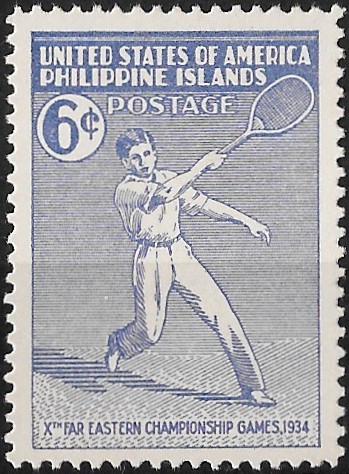

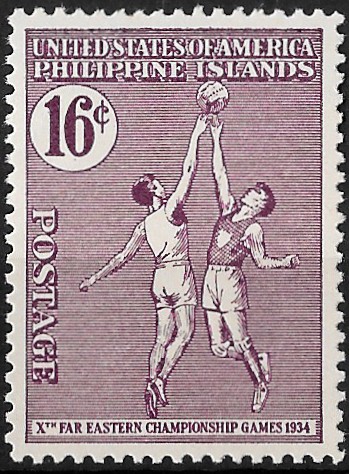
18 September 1931 saw the Mukden Incident or Manchurian Incident as it is otherwise known. An explosion damaged a Japanese railroad in the city of Manchuria. Manchuria was part of China but the Japanese did have agreed special rights in the area. The Japanese Kwantung Army who was stationed in Manchuria at the time blamed the Chinese for the attack and retaliated. It is believed the explosion was actually staged by the Japanese military as a means to move forwards with their attack plans – plans that were not sanctioned by the Prime Minister or Military High Command at the time. Interestingly, the government to follow would bow to public pressure by sanctioning the “retaliation” and renaming their new state to Manchukuo.
Japan pushed for Manchukuo to compete in the Far Eastern Championship Games as a separate state. Of course China did not recognize this Japanese territory and refused to allow Manchukuo to participate in the games. There was intense pressure from within Japan to completely boycott the games if Manchukuo was not allowed to participate – since the nation widely saw it as a Japanese state. The Japanese athletics organization did not agree and elected to participate irrespective of whether Manchukuo was allowed to participate or not. Reportedly, Japanese athletes who did not boycott the games faced severe threats from the Japanese public, military and press and were labeled as traitors to Japan. Several athletes pulled out of the games but many more continued to participate under duress.
To add insult to injury, the Japanese would beat China in the games – taking 4 gold medals compared to China’s 1. Interestingly, only 8 sports were played during the history of the games and there were no silver or bronze medals for runners-up. Here’s the breakdown from 1934:
| Event | Gold Medalist |
|---|---|
| Athletics | Japan |
| Cycling | Japan |
| Swimming | Japan |
| Tennis | Japan |
| Baseball | Philippines |
| Basketball | Philippines |
| Volleyball | Philippines |
| Football (Soccer) | China |
While the Mukden Incident further isolated Japan on the world stage, it was seen as a building block in what would become WWII. It was however the Marco-Polo Bridge Incident of 7th July 1937 that is regarded as the starting point of the Second Sino-Japanese War and hence the start of the Pacific Theatre in WWII. It should be no surprise that the 1938 games were cancelled and the Far Eastern Athletic Association was dissolved once war started between China and Japan. It would not be until the 1974 Asian Games that China, Japan and the Philippines would face each other once again on the sporting fields.
More About the Stamps
The stamps released by the Philippines are not particularly expensive and are fairly easy to obtain in MNH condition. All are unwatermarked and perforated at 11.5. Avid collectors might be interested in what is often referred to the “Malformed T” variety of PH 381. The name was derived due to the fact that the letter “T” in “Eastern” is malformed; bearing a circle on top of the crossbar. As mentioned previously, PH 381 is also the first known postage stamp in the world to feature the sport of baseball.
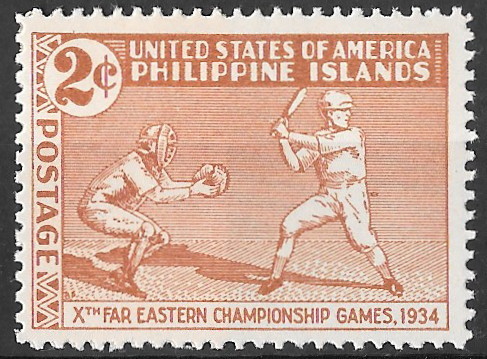
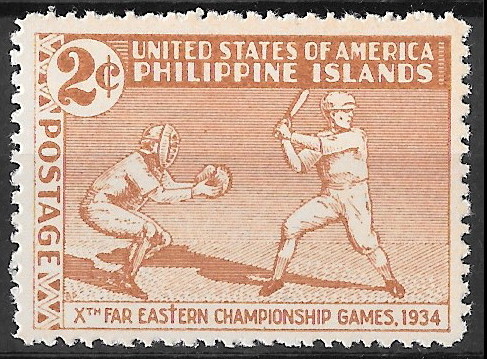
While the stamps are fairly obtainable, covers are less so.
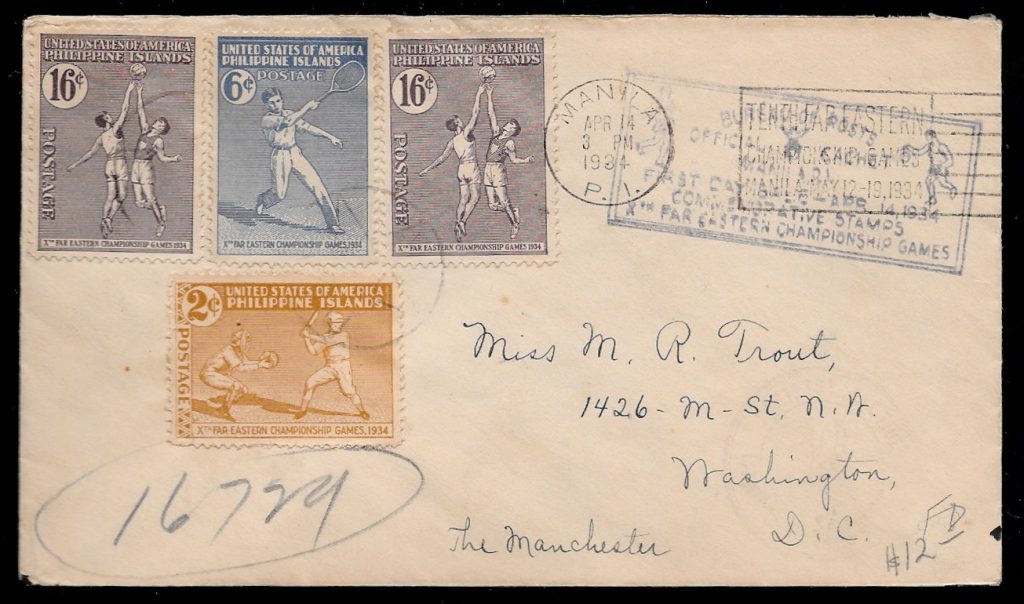
I’ve also managed to pick up an old ticket stub for the 15 May 1934 basketball match. This ticket has had the 16c basketball stamp affixed to it, what a great souvenir someone has created.
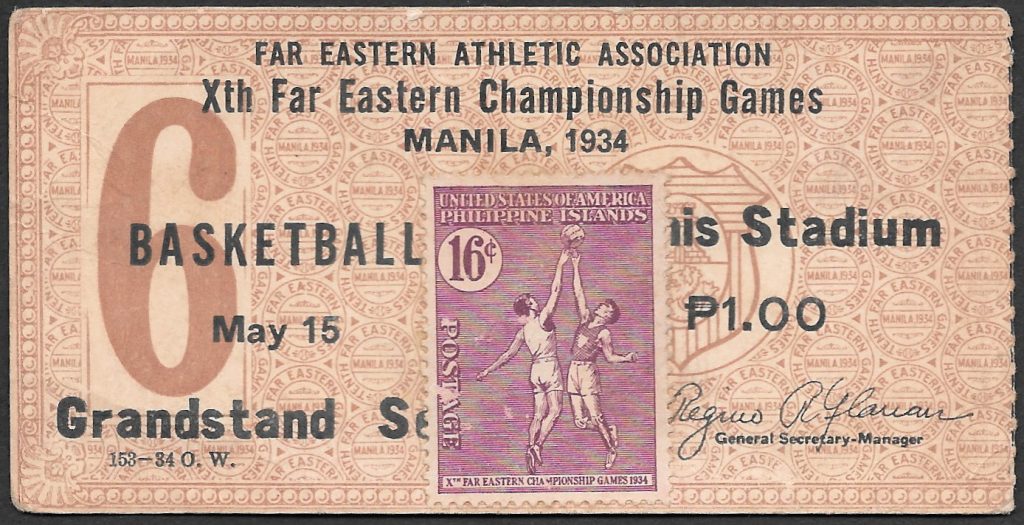
Some interesting labels were produced for the 10th Far Eastern Championship Games also. They are imperforate and measure 37mm x 60 mm making them much larger than the postage stamps. I have seen these labels in both red and green. The labels do not have a price printed on them and I assume they were sold through at least the Manila Central Post Office as I have seen official hand stamps extending across these labels. Drop a comment below if you know more about how these were sold.
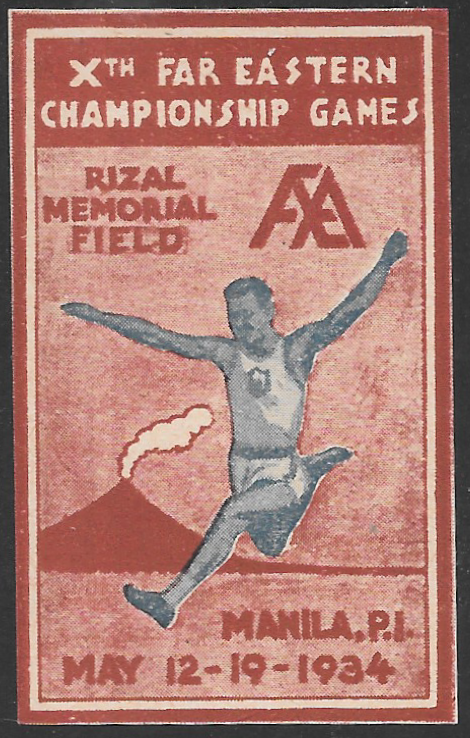
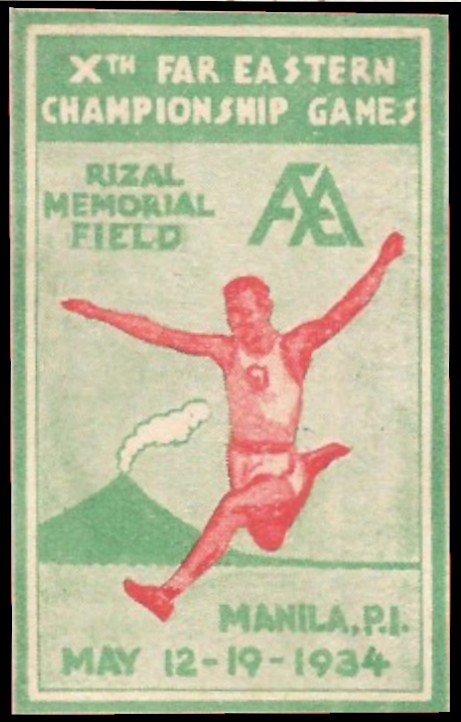
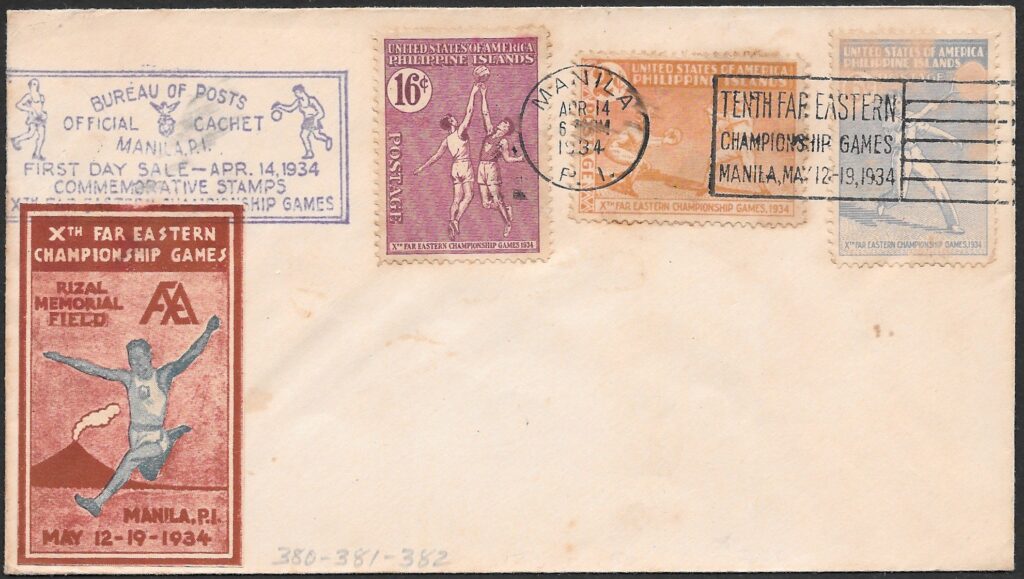
The cachet below was sold as having “signatures from the athletes of the teams participating in the baseball tournament and respectively the Philippines, Japan and China”. I’ve not been able to find a published list of participants to verify this as yet – but if this is correct then this must be a one off cachet.
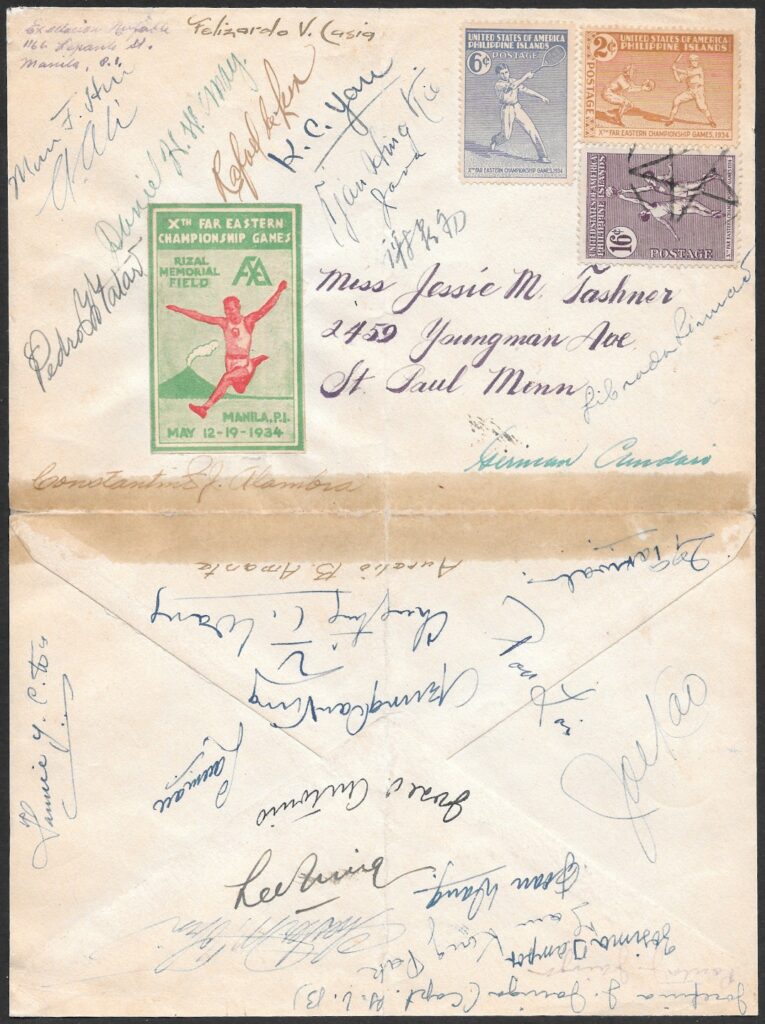
Thanks for reading, happy hunting and have fun with your collection!
